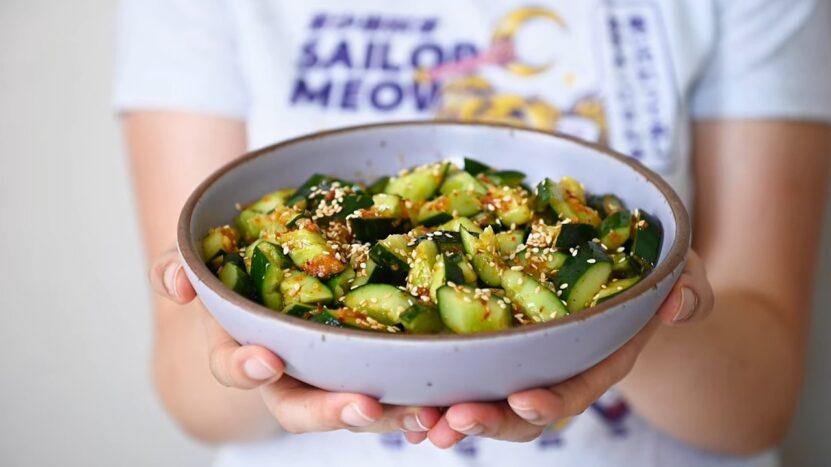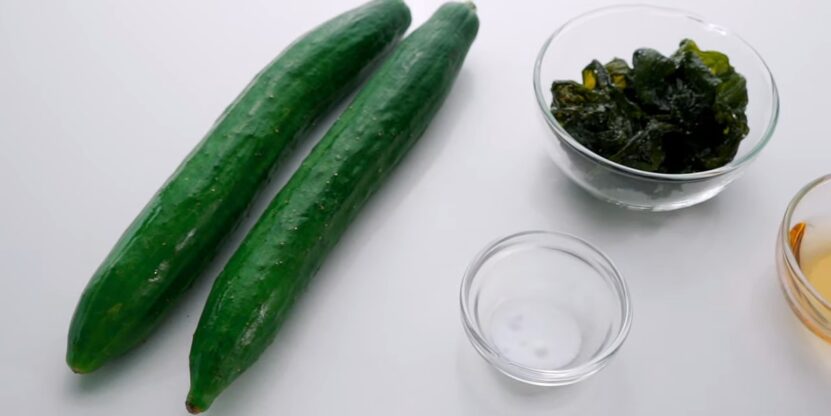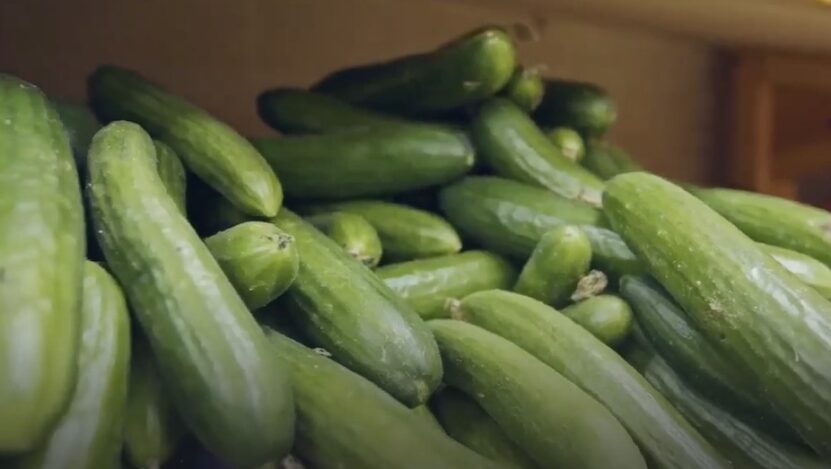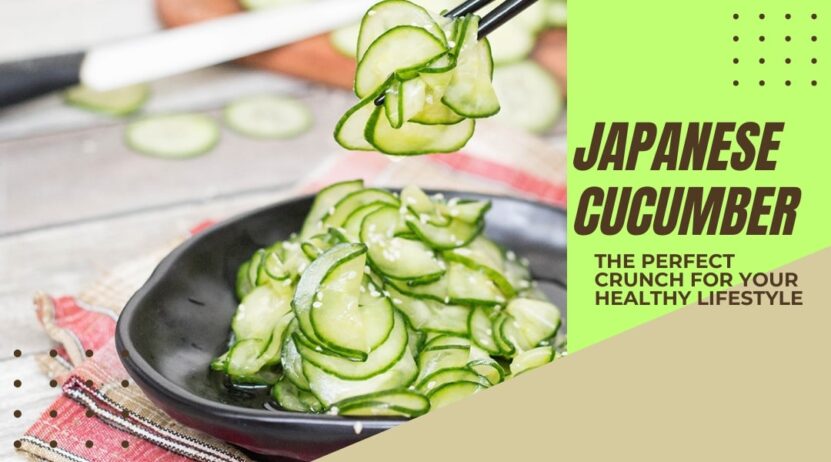When it comes to cucumbers, the Japanese cucumber stands out with its unique characteristics and culinary appeal. With its slender shape, vibrant green color, and crisp texture, this variety has gained popularity in both Asian and international cuisines.
Whether enjoyed raw, pickled, or as a flavorful addition to various dishes,it offers a delightful culinary experience.
Usage

Japanese cucumbers are a versatile vegetable that can be enjoyed in a variety of ways, adding a refreshing and crisp element to your dishes. Here are some popular ways to incorporate into your culinary repertoire:
- Fresh and Crunchy: Japanese cucumbers are perfect for enjoying raw. Their crisp texture and mild flavor make them a refreshing snack on their own or as part of a vegetable platter. Slice them into thin rounds or julienne them for a delightful crunch.
- Salads and Cold Dishes: Add them to salads for a refreshing twist. They pair well with ingredients like tomatoes, radishes, sesame seeds, and a variety of dressings. Additionally, their natural crunch makes them an ideal addition to cold noodle dishes or chilled summer soups.
- Pickling: Japanese cucumbers are often used in pickling due to their firm texture. Quick pickling or marinating them in a mixture of vinegar, sugar, and spices creates a tangy and flavorful side dish or condiment.
- Sushi and Rolls: They are a popular ingredient in sushi and rolls. Their mild taste and crunchy texture provide a refreshing contrast to the other fillings. They can be thinly sliced or cut into strips and added to your favorite sushi creations.
- Sandwiches and Wraps: Incorporate Japanese cucumber slices into your sandwiches or wraps to add a refreshing crunch. They work well with various fillings, such as grilled chicken, tuna, or avocado, creating a satisfying and flavorful bite.
- Gazpacho and Cold Soups: Blend Them with other ingredients like tomatoes, bell peppers, and herbs to create chilled soups such as gazpacho. The cool and refreshing flavors make them an excellent choice for hot summer days.
Selection

When it comes to selecting Japanese cucumbers, a few factors can help you choose the best ones for your culinary needs. Consider the following tips to ensure you pick the perfect Japanese cucumbers:
- Size and Shape: Look for Japanese cucumbers that are slender and straight, with smooth skin. They are typically shorter and more compact compared to other cucumber varieties.
- Color and Texture: Opt for them with vibrant and uniform green skin. Avoid ones with yellowing or blemished skin, as these may indicate aging or decreased freshness. The skin should feel firm and free from wrinkles or soft spots.
- Seedlessness: They are often seedless or have small, underdeveloped seeds. If you prefer seedless, check the label or ask the produce vendor for seedless varieties specifically.
- Fresh Aroma: Give them a gentle sniff near the stem end. A fresh Japanese cucumber should have a mild and slightly sweet aroma. Avoid ones with off-putting or sour smells.
- Organic and Quality Sources: Whenever possible, choose organic ones to minimize exposure to pesticides and ensure a higher quality product. Look from reputable sources known for their commitment to quality produce.
Avoid

When selecting Japanese cucumbers, it’s important to be aware of certain signs that may indicate poor quality or lack of freshness. Here are some red flags to avoid:
- Soft or Mushy Texture: Avoid ones that feel excessively soft, mushy, or have wrinkled skin. These are signs of aging and decreased freshness.
- Yellow or Discolored Skin: Look for cucumbers with vibrant, uniformly green skin. Avoid those with yellowing or discolored patches, as they may be overripe or have been stored for too long.
- Blemishes or Bruising: Check for any signs of blemishes, bruising, or dark spots. These can indicate damage or compromised quality.
- Wrinkled or Wilted Ends: Examine the ends. Wrinkled or wilted ends may suggest dehydration or improper storage.
- Unpleasant Odor: Give them a sniff. A fresh one should have a mild, pleasant aroma. If it smells off, sour, or unpleasant, it may not be of good quality.
- Excessive Bitterness: While a slight bitterness is normal, excessive bitterness can make them less enjoyable. If you have the opportunity, taste a small piece of the cucumber before purchasing to assess its level of bitterness.
By avoiding ones with these characteristics, you can increase your chances of selecting fresh, high-quality that will enhance your culinary creations. Remember to trust your senses and choose cucumbers that are firm, vibrant, and free from any signs of deterioration or spoilage.
Storage

Unwashed cucumbers should be placed in a perforated plastic bag and stored in the refrigerator. To maintain the freshness and crispness of Japanese cucumbers, proper storage is key.
Follow these guidelines:
- Refrigeration is essential for them. Place them in the refrigerator’s vegetable crisper drawer, which provides a slightly higher humidity level to prevent drying out.
- Keep them unwashed and whole until you’re ready to use them. This helps preserve their natural moisture and crisp texture.
- To control moisture, loosely wrap the cucumbers in a paper towel or place them in a perforated plastic bag. This prevents excess moisture buildup and maintains their crispness.
- Avoid storing thems with ethylene-producing fruits and vegetables, as ethylene can accelerate ripening and lead to a softer texture. Keep them separate to maintain their freshness.
- They are best consumed within 5-7 days for optimal flavor and texture. While they can last longer, their crispness may diminish over time.
- Consider pickling or preserving Japanese cucumbers if you have an excess. This allows for extended storage and enjoyment beyond their fresh state.
Ripening
In general, vegetables will not ripen further after harvest.
Nutritional Information

Japanese cucumbers not only add refreshing crunch and flavor to your meals but also offer a range of health benefits. Here’s a look at the nutritional profile:
- Hydration: Japanese cucumbers have a high water content, making them an excellent choice for staying hydrated and maintaining proper bodily functions.
- Low in Calories: They are low in calories, making them a great addition to a balanced diet or for those watching their calorie intake.
- Fiber: They are a good source of dietary fiber, which aids in digestion, promotes feelings of fullness, and supports a healthy digestive system.
- Vitamins and Minerals: Japanese cucumbers contain essential vitamins and minerals, including vitamin K, vitamin C, potassium, and magnesium. Vitamin K is important for bone health and blood clotting, while vitamin C acts as an antioxidant and supports immune function.
- Antioxidants: They contain antioxidants that help protect the body against damage from harmful free radicals, potentially reducing the risk of chronic diseases.
- Hydration: Japanese cucumbers have a high water content, making them an excellent choice for staying hydrated and maintaining proper bodily functions.
Tips & Trivia
- It is originally from India where it has been cultivated for over 3,000 years. There is a reference to people eating in the ancient story of Gilgamesh.
- From India, the cucumber spread to Greece, then Italy where became favored by the Romans, and it eventually appeared in China

